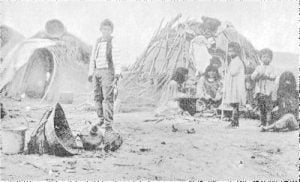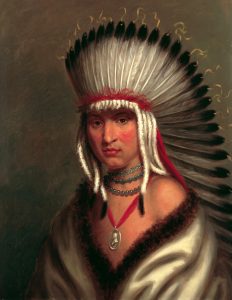Powhatan Genealogy and History
Powhatan Indians (Southern Renape pawd’tan, ‘falls in a current’ of water.-Gerard). A confederacy of Virginian Algonquian tribes. Their territory included the tidewater section of Virginia from the Potomac south to the divide between James River and Albemarle sound, and extended into the interior as far as the falls of the principal rivers about Fredericksburg and Richmond. They also occupied the Virginia counties east of Chesapeake Bay and possibly included some tribes in lower Maryland. In the Piedmont region west of them were the hostile Monacan and Manahoac, while on the south were the Chowanoc, Nottoway, and Meherrin of Iroquoian stock. … Read more



